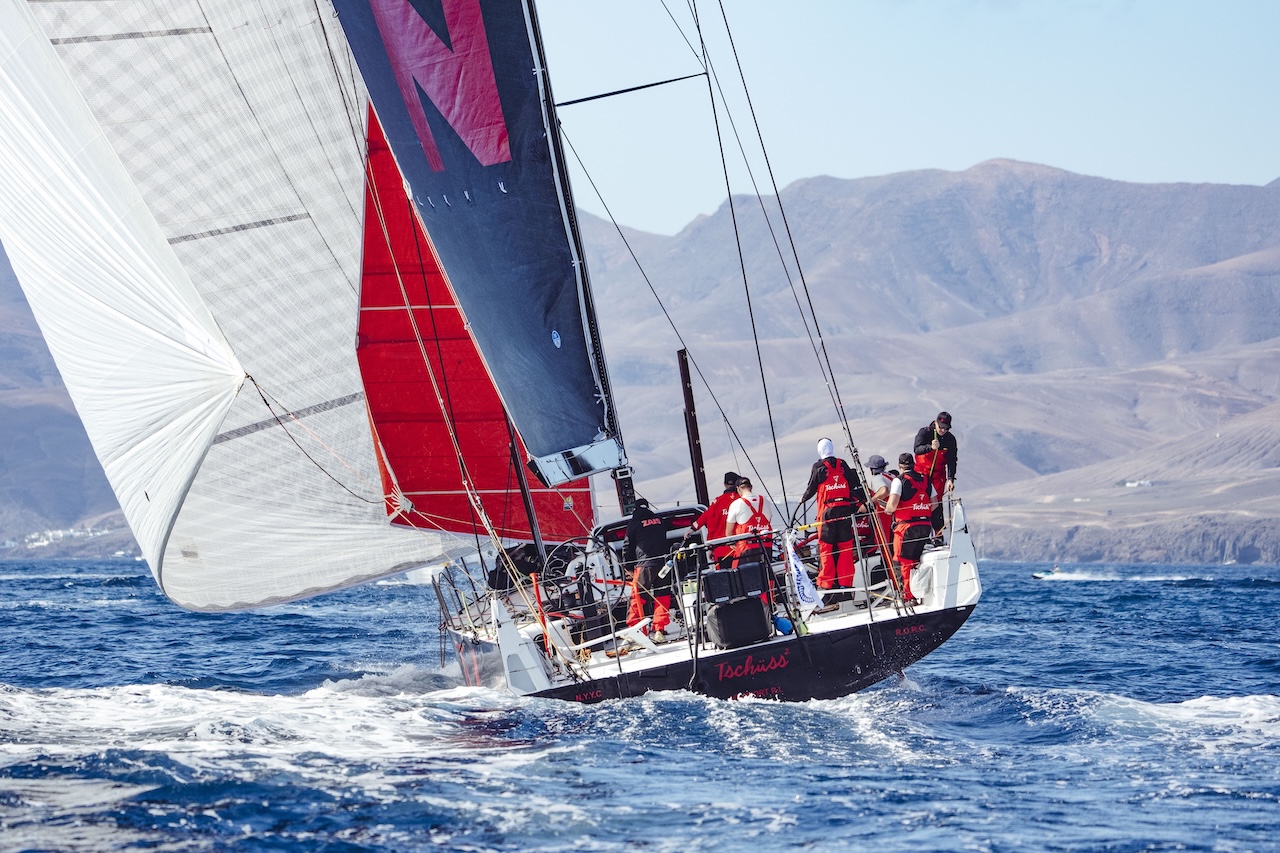The 2026 RORC Transatlantic Race

Every great ocean race needs more than a start line. It needs a stage. A harbour that embodies the romance of offshore sailing, the grit of preparation, and the sense of stepping into something larger than yourself. For the RORC Transatlantic Race, that place is Marina Lanzarote – a port where volcanic ridges meet the Atlantic trades, and where decades of investment in infrastructure and community spirit converge into one perfect launchpad.
A Decade of Partnership
Since 2014, Marina Lanzarote has been the spiritual and logistical home of the race. What began as a one-off collaboration has matured into a decade-long partnership between the Royal Ocean Racing Club, Calero Marinas, the Government of the Canary Islands, the Government of Lanzarote, and the Real Club Náutico de Arrecife. Together, these institutions have transformed Lanzarote into a powerhouse of offshore sailing.
Calero Marinas itself is a story of vision and long-term strategy. With more than 40 years at the helm of Canarian marine development, the group has positioned its facilities not merely as mooring spaces, but as hubs of international racing excellence. Marina Lanzarote’s role in the RORC Transatlantic Race is proof of that foresight.
World-Class Facilities in a Volcanic Setting
For competitors, Marina Lanzarote delivers the essentials of offshore readiness:
Capacity for yachts up to 60m – from sleek Class40s to towering Maxis.
A state-of-the-art boatyard with heavy-lift cranes and specialist technical services.
A full-service support network spanning rigging, sails, hydraulics, electronics, and provisioning.
This blend of infrastructure and expertise means crews arrive not just to start a race, but to fine-tune for survival. The transatlantic is 3,000 nautical miles to Antigua – and every bolt tightened in Lanzarote could prove decisive mid-Atlantic.
As Jeremy Wilton, CEO of RORC, put it:
“Lanzarote remains the ideal starting destination for the RORC Transatlantic Race. With exceptional facilities, rich maritime heritage and year-round sailing conditions, it offers everything a race of this calibre requires.”
A Community that Embraces the Race
But world-class facilities are only half the story. What sets Lanzarote apart is the warmth and energy of its community. Each edition, the marina transforms into a race village alive with activity: skippers’ briefings, safety checks, school visits, dockside parties. Visitors from across Europe mingle with locals, and the race becomes as much a cultural festival as a sporting contest.
Edging closer to race day, the atmosphere shifts. Crews finalise provisioning, double-check safety gear, and walk the pontoons under the gaze of volcanic cliffs. Then, when the cannons fire on race morning, the fleet powers down Lanzarote’s dramatic coastline – a mix of adrenaline, pride and farewell. The island itself seems to lean out to sea, urging them forward.
Building for the Future – Marina Jandía
The Calero Marinas group isn’t standing still. Its newest project, Marina Jandía in Fuerteventura, is under development. Designed to host 310 berths for yachts between 6 and 50 metres, it will include leisure spaces, restaurants and retail. For Fuerteventura, this represents not just a marina, but a milestone in tourism and marine infrastructure – a sign of the Canaries doubling down on their maritime identity.
A Legacy of Sail and Society
The Real Club Náutico de Arrecife (RCNA), founded in 1872, underscores the cultural depth of Lanzarote’s role. From its grassroots youth programmes to its proud tradition of ocean racing, the RCNA ensures that the RORC Transatlantic Race is not just an imported spectacle, but a deeply rooted local celebration.
Lanzarote Sports Destination has also carved out a reputation as a year-round training hub, drawing Olympic teams, offshore sailors and superyacht crews. This ecosystem means that when the RORC fleet arrives, it does so into a living, breathing centre of marine excellence.
Beyond a Race Start
For the sailors, the start in Lanzarote is more than logistics – it is symbolism. The island is the last European foothold before the ocean swallows them whole. Each departure carries echoes of the great navigators: Columbus, Magellan, and the countless anonymous mariners who once looked west from these shores.
As one skipper remarked in 2024:
“You leave Lanzarote not just with a full fuel tank and fresh sails – you leave with the weight of history behind you.”
Why Lanzarote Matters for Offshore Racing
From a Forbes perspective, Marina Lanzarote is a case study in how strategic infrastructure, public-private partnerships, and heritage branding can create global visibility. By hosting the RORC Transatlantic Race, Lanzarote projects its name into the heart of the sailing world, attracting high-net-worth yacht owners, investment in local tourism, and international media coverage.
For Old Sea Dogs, it’s simpler: Lanzarote has the salt in its veins. It’s the perfect stage to send sailors westward into the Atlantic – a launchpad that feels both epic and intimate.
The Perfect Launchpad
So, when the 2026 RORC Transatlantic Race fires off the line on 11 January, Marina Lanzarote will again have played its part: boats prepped, crews sharpened, families waving, and the island’s colours flying.
Because this marina is more than just a port of departure. It is the gateway to the Atlantic, the crucible of preparation, and the soul of a community that believes in the ocean.
And when the last sails disappear over the horizon, every sailor knows one thing: their race began not with the start gun, but with the warm embrace of Lanzarote.
Race Info
Start: Marina Lanzarote, Canary Islands – 11 January 2026
Distance: 3,000 miles
Finish: Antigua, Caribbean
Entry: Online now at RORC.org










